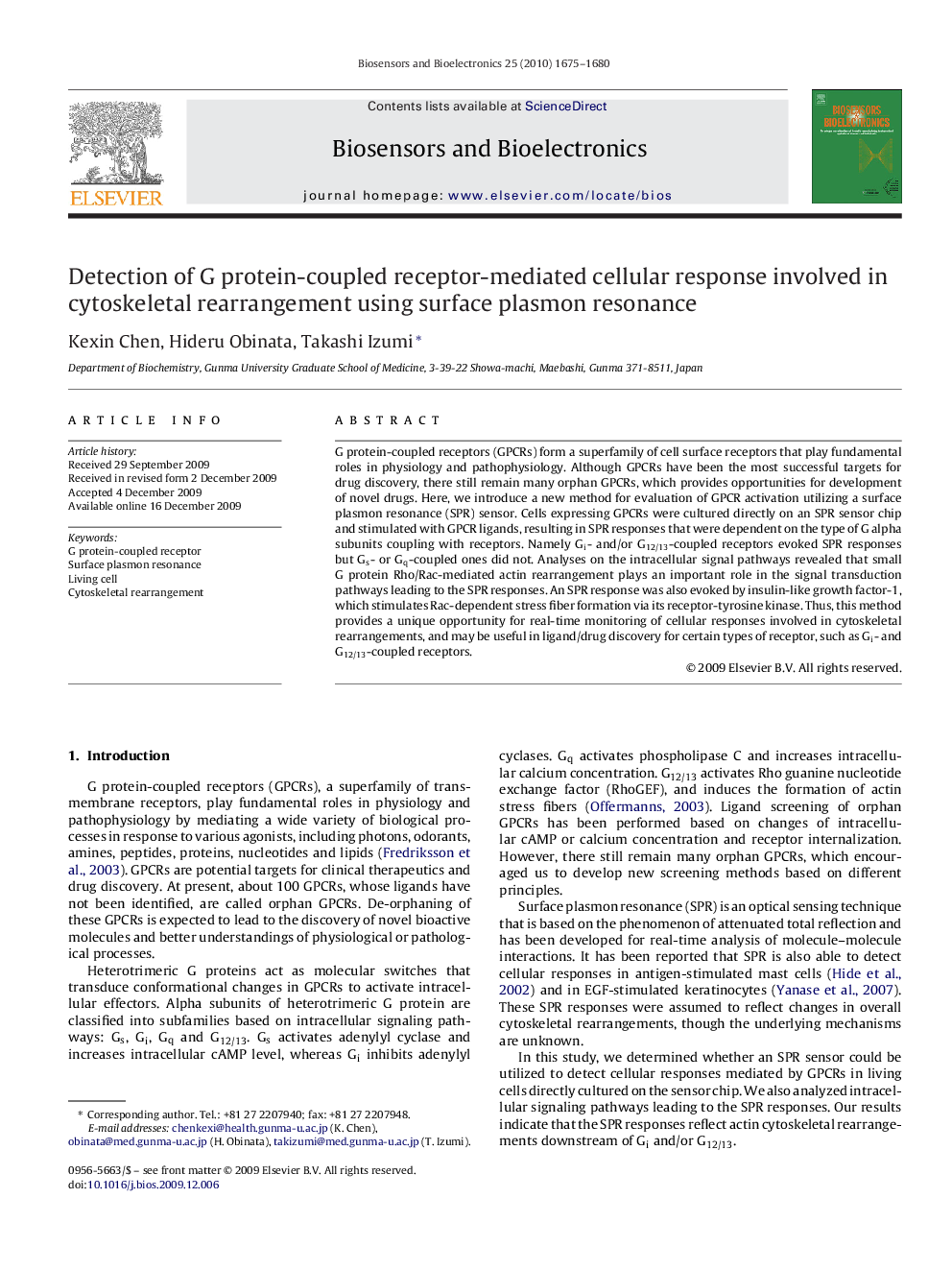| Article ID | Journal | Published Year | Pages | File Type |
|---|---|---|---|---|
| 867859 | Biosensors and Bioelectronics | 2010 | 6 Pages |
G protein-coupled receptors (GPCRs) form a superfamily of cell surface receptors that play fundamental roles in physiology and pathophysiology. Although GPCRs have been the most successful targets for drug discovery, there still remain many orphan GPCRs, which provides opportunities for development of novel drugs. Here, we introduce a new method for evaluation of GPCR activation utilizing a surface plasmon resonance (SPR) sensor. Cells expressing GPCRs were cultured directly on an SPR sensor chip and stimulated with GPCR ligands, resulting in SPR responses that were dependent on the type of G alpha subunits coupling with receptors. Namely Gi- and/or G12/13-coupled receptors evoked SPR responses but Gs- or Gq-coupled ones did not. Analyses on the intracellular signal pathways revealed that small G protein Rho/Rac-mediated actin rearrangement plays an important role in the signal transduction pathways leading to the SPR responses. An SPR response was also evoked by insulin-like growth factor-1, which stimulates Rac-dependent stress fiber formation via its receptor-tyrosine kinase. Thus, this method provides a unique opportunity for real-time monitoring of cellular responses involved in cytoskeletal rearrangements, and may be useful in ligand/drug discovery for certain types of receptor, such as Gi- and G12/13-coupled receptors.
